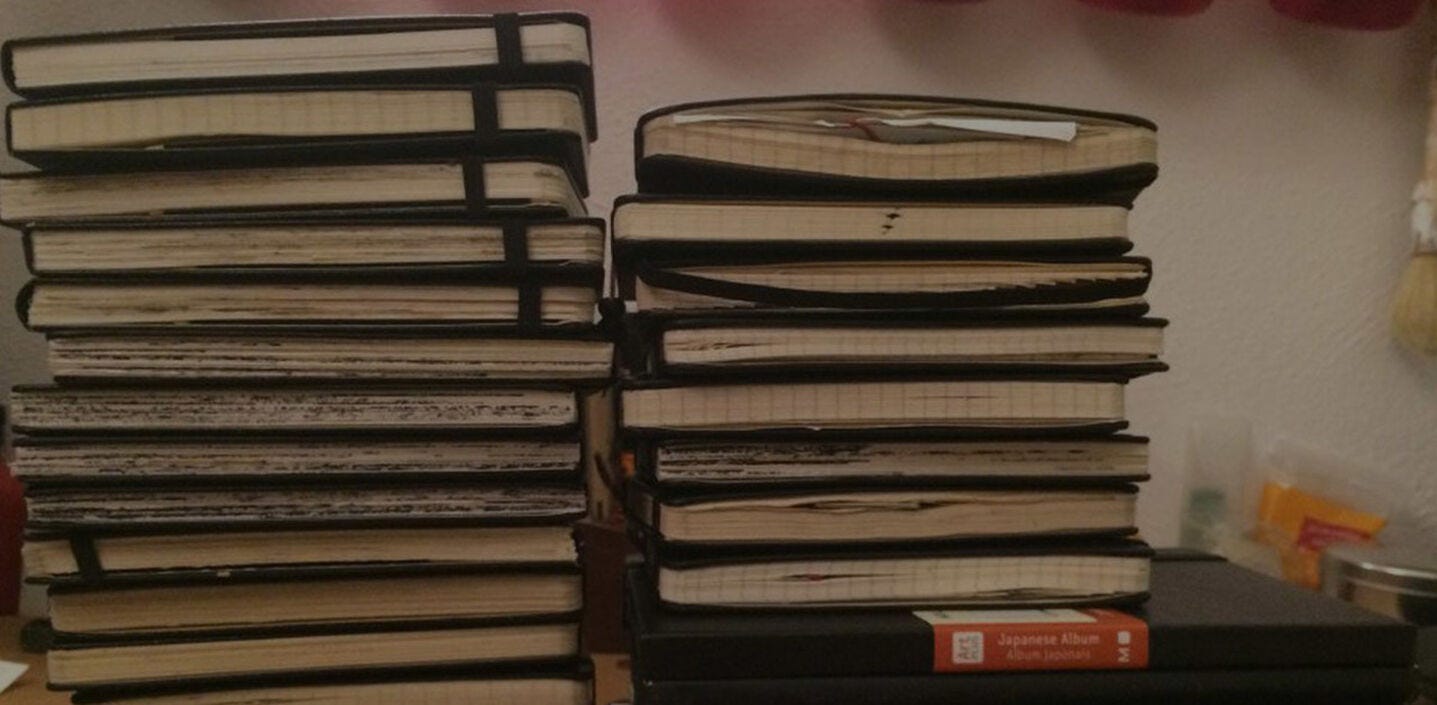Moleskine Notebooks
A Serendipity Story
Serendipity Stories bring the practice of serendipity to life in real-world examples.

In summer 1995, Maria Sebregondi was sailing off the Tunisian coast with friends when a business conversation sparked an idea that would eventually be worth half a billion euros.
Among her companions was Francesco Franceschi, whose company, Modo & Modo, a designer gift retailer, was unhappy with their profit margins. Because they depended on other companies to manufacture products, their revenues weren’t high enough. Modo & Modo wanted a product they could manufacture themselves—they just had no idea what.
The group spent the night exchanging ideas, ultimately deciding to target what Sebregondi labeled the “Contemporary Nomad”—someone creative, free-spirited, and mobile in this new era of cell phones, email, and cheap flights. But while they’d found a promising market, no clear product emerged from their brainstorming.
Back in Rome, Sebregondi wrestled with Franceschi’s product challenge for weeks. She toyed with various ideas, including a traveler’s toolkit with designer pens, bags, and other items, but nothing felt right. Then, weeks later, she sat down to read Bruce Chatwin’s book, The Songlines, and two passages about notebooks triggered a new connection for her. Chatwin described pulling “a black, oilcloth-covered notebook, its pages held in place with an elastic band” from his pocket, explaining he “used to get them in Paris” but “now they don’t make them any more.”1
Later, Chatwin elaborated: the owner of his Parisian papeterie had told him “the vrai moleskine was getting harder and harder to get”—there was only one supplier, a small family business in Tours. When Chatwin tried to order a hundred notebooks, he learned the manufacturer had died and his heirs had sold the business.
The passage resonated because Sebregondi remembered the notebooks from her own student days in Paris. She still had several tucked away in old boxes. Examining them with fresh eyes, she wondered why Chatwin had become so attached to this particular model that he would try to order a hundred rather than risk running out.
The connection evolved into an idea: here might be the solution to Franceschi’s challenge—a simple product, easy to manufacture, appealing to creatives, and with an aura of travel, glamor, and discovery.
Sebregondi pursued the idea further. Phone calls to France confirmed Chatwin’s account and she began to notice the notebooks in other contexts: exhibitions of Matisse and Picasso’s sketchbooks, photographs of Hemingway at work. The product had a pedigree—but remarkably, no one made it anymore.
Sebregondi brought the idea to Milan, where Franceschi immediately recognized its potential and they embarked on a two-year design process to recreate it.
The resulting Moleskine notebook was carefully crafted to appeal to their “Contemporary Nomad”: the minimal black cover suggested both durability and luxury, the non-standard dimensions fit in jacket pockets, and the rounded corners prevented dog-earing, making it travel-ready. Plus, the back pocket invited users to collect “photos, ticket stubs, the phone numbers of beautiful strangers.”2
The initial run of 3,000 notebooks in 1997 sold out in days at Modo & Modo’s Milan bookshop. In 1998, they sold 30,000 notebooks.3 Within a decade, they had expanded far beyond Modo & Modo, and Barnes & Noble had become their largest retail partner. In 2016, the company was sold for half a billion euros.4
What began as a casual conversation between friends created one of the most recognizable notebooks in the world. Proof that those who recognize opportunity in unexpected places, form new connections, and pursue them can create value beyond their wildest dreams.
Applying the Example
Sebregondi's success followed a pattern anyone can learn:
Seek actively- stay alert to problems worth solving
Encounter openly- read broadly, travel, engage with diverse people
Connect creatively- link new information to old experiences
Activate decisively- turn insights into action
Utilize this practice and you'll discover that serendipity isn't rare magic—it's a renewable resource waiting to be tapped.
Learn more about serendipity and how you can bring the practice of serendipity into your work and life at practiceofserendipity.com.
.
References:
1, 2 “The Notebook: A History of Thinking on Paper” by Roland Allen
3 Harkin, J. (2007, October 27). Resurrecting Moleskine notebooks. Newsweek. https://www.newsweek.com/resurrecting-moleskine-notebooks-67817
4 Allen, R. (2024, August 31). Moleskine mania: How a notebook conquered the digital era. The Walrus. https://thewalrus.ca/moleskine/
Moleskine. (n.d.). Our heritage. Retrieved October 28, 2025, from https://www.moleskine.com/en-us/the-world-of-moleskine/our-heritage/

